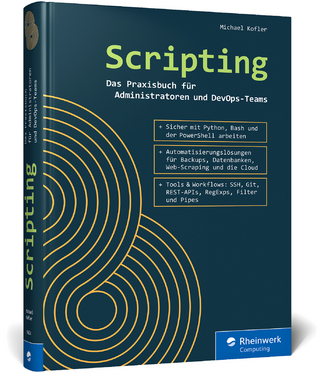
Mixed-Criticality Industrial Wireless Networks
Springer Verlag, Singapore
978-981-19-8924-7 (ISBN)
Important tasks must be completed on time and with guaranteed quality;
This open access book introduces how to manage important tasks in industrial wireless networks.
Important tasks must be completed on time and with guaranteed quality; that is the consensus reached by system designers and users. However, for too long, important tasks have often been given unnecessary urgency, and people intuitively believe that important tasks should be executedfirst so that their performance can be guaranteed. Actually, in most cases, their performance can be guaranteed even if they are executed later, and the “early” resources can be utilized for other, more urgent tasks. Therefore, confusing importance with urgency hinders the proper use of system resources. In 2007, mixed criticality was proposed to indicate that a system may contain tasks of various importance levels. Since then, system designers and users have distinguished between importance and urgency.
In the industrial field, due to the harsh environment they operate in, industrial wireless networks’ quality of service (QoS) has always been a bottleneck restricting their applications. Therefore, this book introduces criticality to label important data, which is then allocated more transmission resources, ensuring that important data’s QoS requirements can be met to the extent possible.
To help readers understand how to apply mixed-criticality data to industrial wireless networks, the content is divided into three parts. First, we introduce how to integrate the model of mixed-criticality data into industrial wireless networks. Second, we explain how to analyze the schedulability of mixed-criticality data under existing scheduling algorithms. Third, we present a range of novel scheduling algorithms for mixed-criticality data.
If you want to improve the QoS of industrial wireless networks, this book is for you.
Xi Jin received her Ph.D. degree in computer science from Northeastern University, Shenyang, China, in 2013 and is currently a Professor at the Shenyang Institute of Automation, Chinese Academy of Sciences, China. Her research interests include industrial networks, mixed-criticality scheduling, real-time scheduling, Internet of Things, and cyber-physical systems. She is a senior member of the China Computer Federation (CCF) and a member of the CCF technical committee on embedded systems.Changqing Xia received his Ph.D. degree from Northeastern University, Shenyang, China, in 2015 and is currently an Associate Professor at the Shenyang Institute of Automation, Chinese Academy of Sciences, China. His research interests include industrial networks, mixed-criticality systems and industrial edge computing, especially scheduling algorithms and edge-cloud collaboration optimization. He is a senior member of the China Computer Federation and a member of the CCF technical committee on embedded systems. Chi Xu received his Ph.D. degree from the University of the Chinese Academy of Sciences, Beijing, China, in 2017 and is currently an Associate Professor at the Shenyang Institute of Automation, Chinese Academy of Sciences, Shenyang, China. His research interests include industrial wireless networks, 5G URLLC, and tactile Internet. Dr. Xu is a 3GPP standardization delegate, a Voting Member of the IEEE 1918.1 Working Group for Tactile Internet and a member of the IEEE 1932.1 Working Group for Licensed/Unlicensed Spectrum Interoperability in Wireless Mobile Networks. Dong Li received his Ph.D. degree from the University of the Chinese Academy of Sciences, Beijing, China, in 2016 and is currently a Professor at the Shenyang Institute of Automation, Chinese Academy of Sciences, China. His research interests include industrial internet, software defined networking, real-time scheduling and industrial 5G. He is a co-chairman of ST8WG1 of China Communications Standards Association.
Chapter 1 Introduction.- Chapter 2 Schedulability analysis of mixed-criticality data under fixed-priority scheduling .- Chapter 3 Schedulability Analysis of Mixed-Criticality Data under EDF Scheduling.- Chapter 4 Mixed-Criticality scheduling for TDMA networks .- Chapter 5 Mixed-Criticality scheduling with multiple radio interfaces .- Chapter 6 Mixed-Criticality Scheduling on 5G New Radio.- Chapter 7 Conclusions and Future Directions.
| Erscheinungsdatum | 16.03.2023 |
|---|---|
| Reihe/Serie | Wireless Networks |
| Zusatzinfo | 1 Illustrations, black and white; XI, 131 p. 1 illus. |
| Verlagsort | Singapore |
| Sprache | englisch |
| Maße | 155 x 235 mm |
| Themenwelt | Mathematik / Informatik ► Informatik ► Netzwerke |
| Technik ► Elektrotechnik / Energietechnik | |
| Technik ► Nachrichtentechnik | |
| ISBN-10 | 981-19-8924-9 / 9811989249 |
| ISBN-13 | 978-981-19-8924-7 / 9789811989247 |
| Zustand | Neuware |
| Haben Sie eine Frage zum Produkt? |
aus dem Bereich


